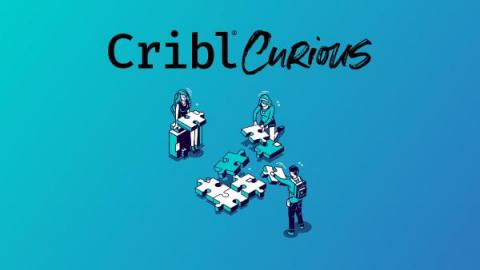Operations | Monitoring | ITSM | DevOps | Cloud
April 2022
High-Performance Javascript in Stream - Why the Function in Your Filter Matters
Being a Cribl Pack author, I frequently receive questions related to why I chose to implement a certain functionality inside my Packs the way I did. A few lives ago, I worked for a Fortune 250 oil & gas company where I managed our SIEM environment. We didn’t have much in terms of system resources, so we needed to make everything run as efficiently as possible. (Maybe that’s where I get my love for performance from?)
AppScope 1.0: Changing the Game for Infosec, Part 2
We’re introducing AppScope 1.0 with a series of stories that demonstrate how AppScope changes the game for SREs and developers, as well as Infosec, DevSecOps, and ITOps practitioners. This blog is the second of two Infosec stories. For both Part 1 and Part 2, Randy Rinehart, Principal Product Security Engineer at Cribl, contributed extensively.
Are You Curious? Announcing the Launch of Cribl Curious: A Q&A Site for the Cribl-Inclined
Our amazing user community is growing so fast that we want to give you more resources to learn and share your knowledge and experience with others. So…today we launch Cribl Curious! Curious is a Q&A site for asking and answering technical questions about Cribl Stream, Cloud, Edge, Packs, and AppScope. Goat a question about how something works in Cribl? Come on over to see how your peers have solved similar problems. Checked the docs and it’s just not clicking for you?
Troubleshooting Sources and Destinations in Cribl Stream
This is Part One of a series of blogs around troubleshooting Cribl Stream. Part One will focus on identifying and troubleshooting issues with Sources and Destinations in Stream. I will cover some of the common problems that users face and how you can work through them and find the root cause.
ZScaler Event Optimization with Cribl Stream
ZScaler delivers a suite of well-regarded products for helping IT securely move from network infrastructure to the cloud, using principles of zero trust. According to their website, they have 5,600+ customers and process 200B+ daily transactions.
Intro to FREE Cribl Sandboxes & Preparing for Upcoming Privacy Regulations
How I Stream: Solving Tricky Security Challenges and Optimizing Splunk
Greetings Criblers! We’re introducing a new series by the Criblers, for the Criblers called How I Stream! Each month (maybe more frequently–you, too can be featured, share your insights here), we’ll share a quick profile from one of our community GOATS (Greatest of All Time Streamers) sharing use cases and lessons learned. Our first guest goes by Hobbit in the community.
Lights, Camera, Action: Introducing The Fellowship of the Stream
Last week, an article from SiliconAngle came out detailing the challenges facing cybersecurity professionals. Companies are in desperate need of solutions to deal with cloud-native applications that exist in fast-paced environments. The security and IT teams monitoring these applications need scalable and flexible solutions that drive actionable insights. That’s why we built Cribl Stream.
The Bird is the Word: Getting Up and Running Fast on Humio, by Crowdstrike
I’ve been in the log data analytics space for years, and I have loved seeing the technology and methodologies change and evolve. One of my favorite changes has been the emergence of index-less solutions, and Humio has a great solution here. If you haven’t heard of Humio, you should check out their index-less log management solution for yourself (free up to 16 GB/day too).
The Fellowship of the Stream: Unlock Radical Levels of Choice & Control with Observability Data
Unlock Radical Levels of Choice & Control with Cribl
Are You GDPR-Aware?
Since 2018, General Data Protection Regulation (GDPR) has been on everyone’s lips – and for good reason. It’s the gold standard for consumer protection. While privacy laws present challenges to enterprises big and small, we can’t escape the reality that consumer data is constantly mined and sold.
Source-Side Queueing: You Down With UDP?
Source-side queueing is a fancy way of saying: You can configure Cribl products to make sure data isn’t lost in the event of downstream backpressure, again. Those familiar with Cribl Stream might be aware of destination queuing or persistent queuing, wherein Stream can write data to the local disk in the event of an issue reaching the destination. Maybe your SIEM is suffering from disk I/O latency. Maybe there is a DNS problem with your load balancer (Hint: It’s always DNS).
Spring4Shell: Responding to Zero-Day Threats with the Right Data
On March 30th, 2022, rumors began to swirl around a GitHub commit from a researcher containing proof of concept (POC) exploit code. The exploit targeted a zero-day in the Spring Core module of the Spring Framework, and was quickly confirmed against specific versions of Spring Core with JDK 9 and above. Anything running Tomcat is most at risk given the POC was based on Tomcat apps. This threat posture will evolve over time as new vectors and payloads are discovered and distributed.












